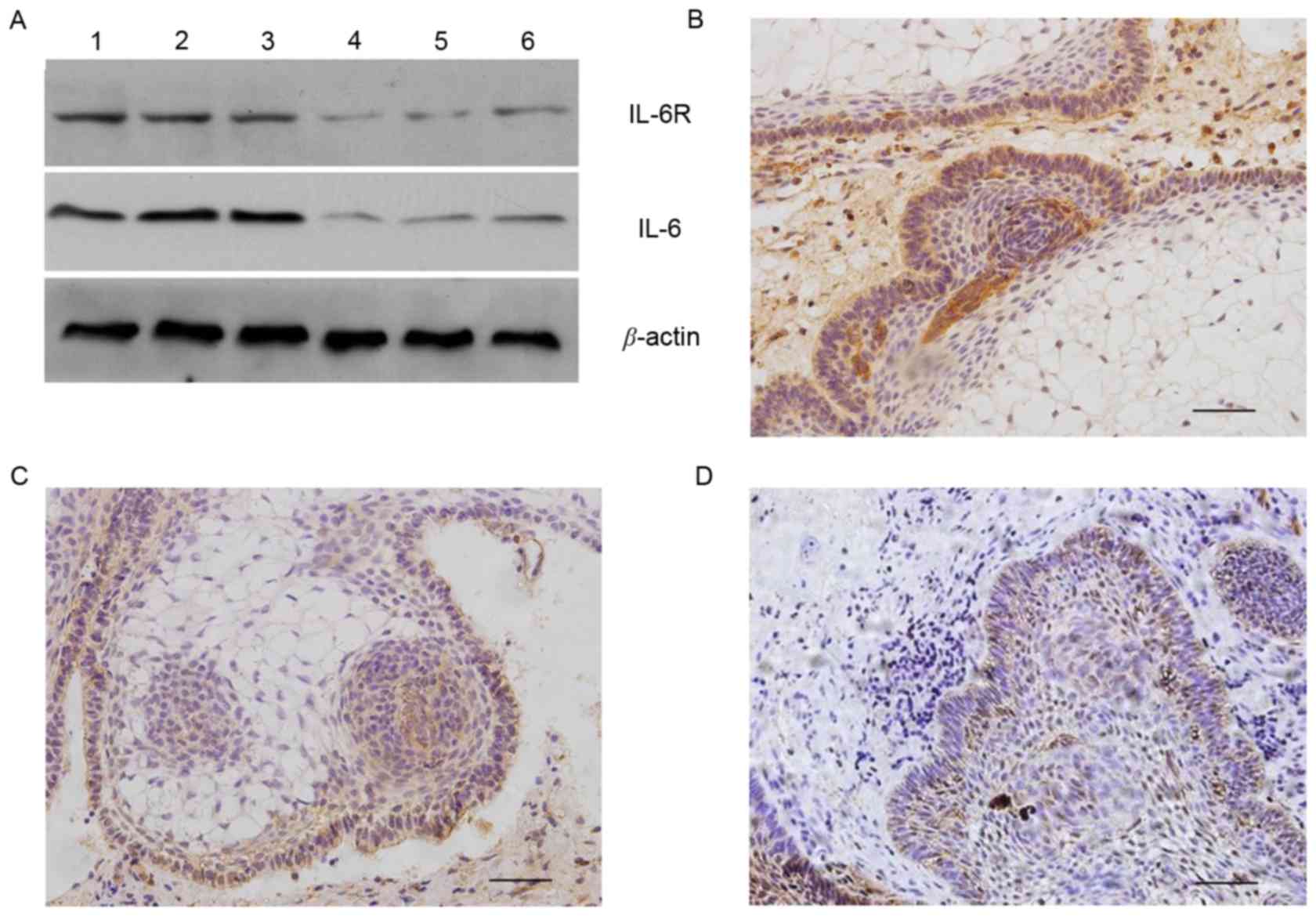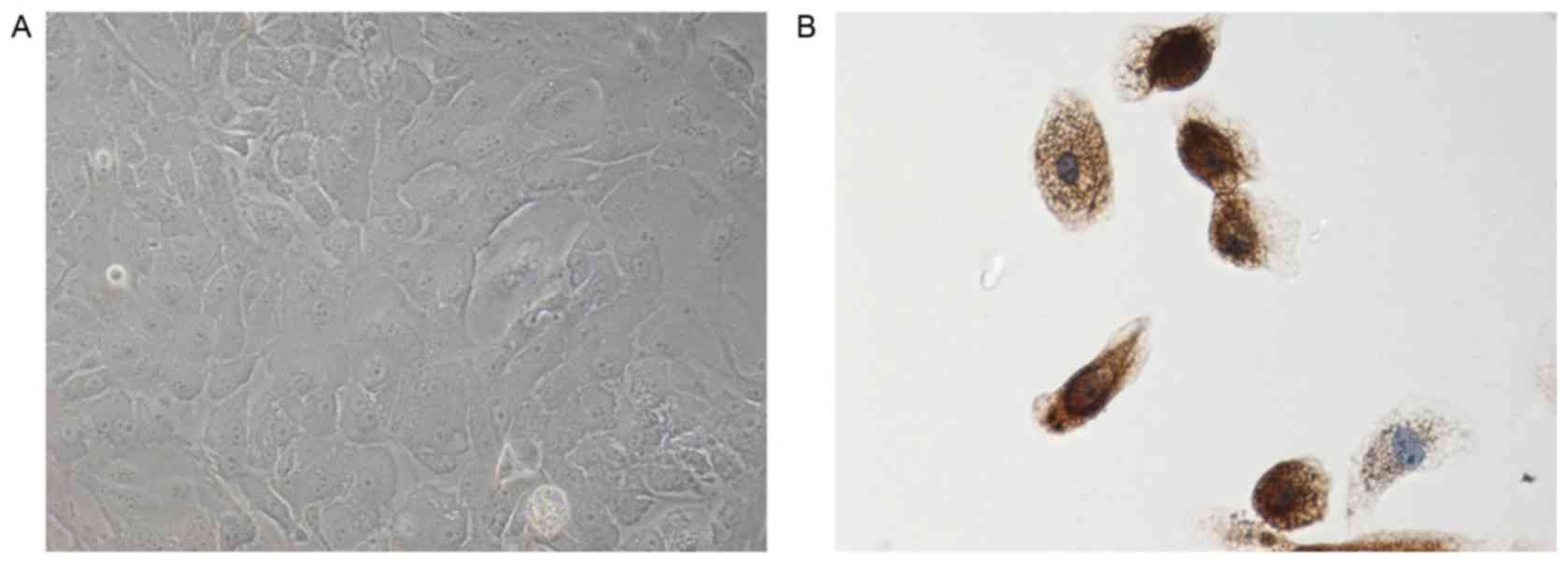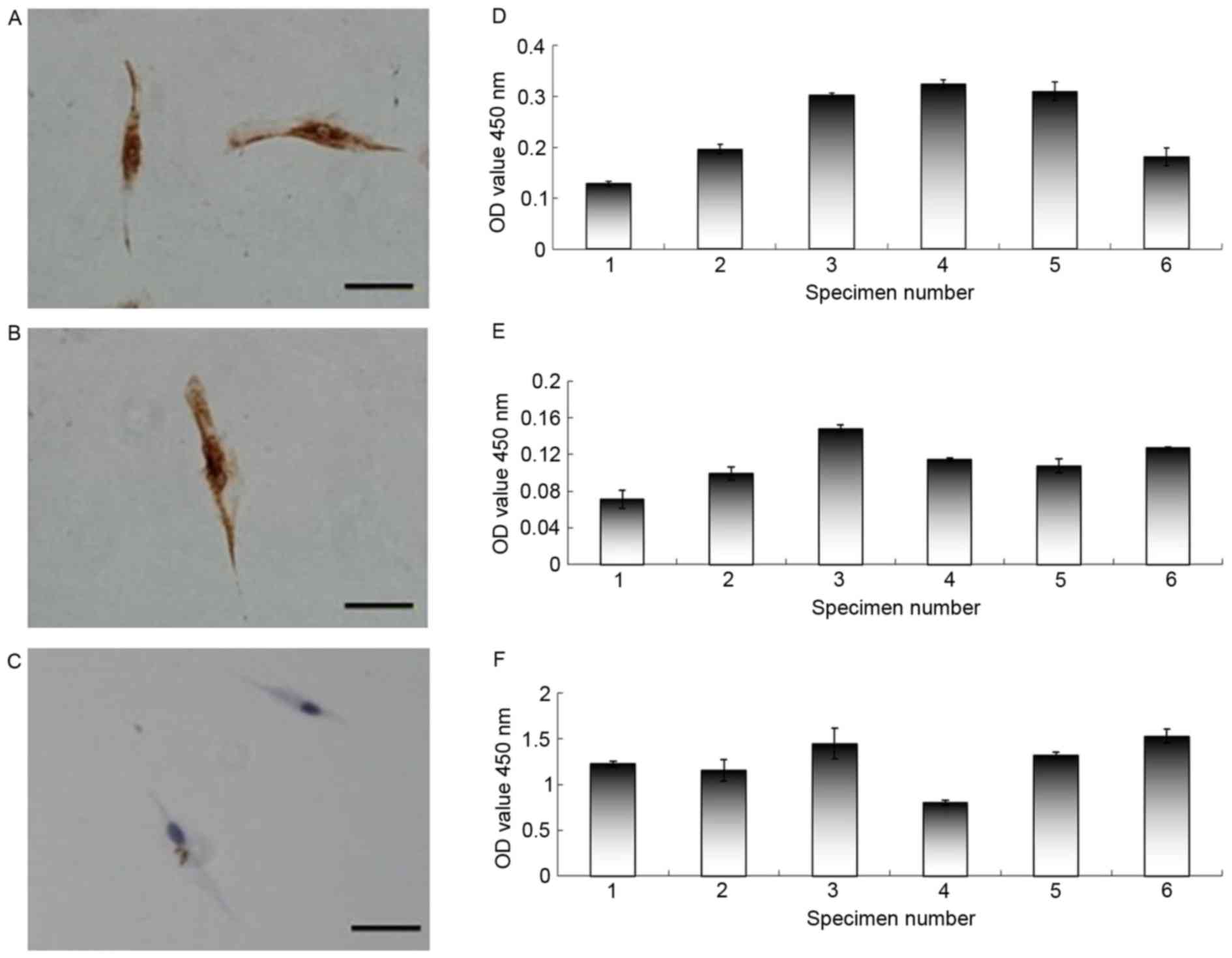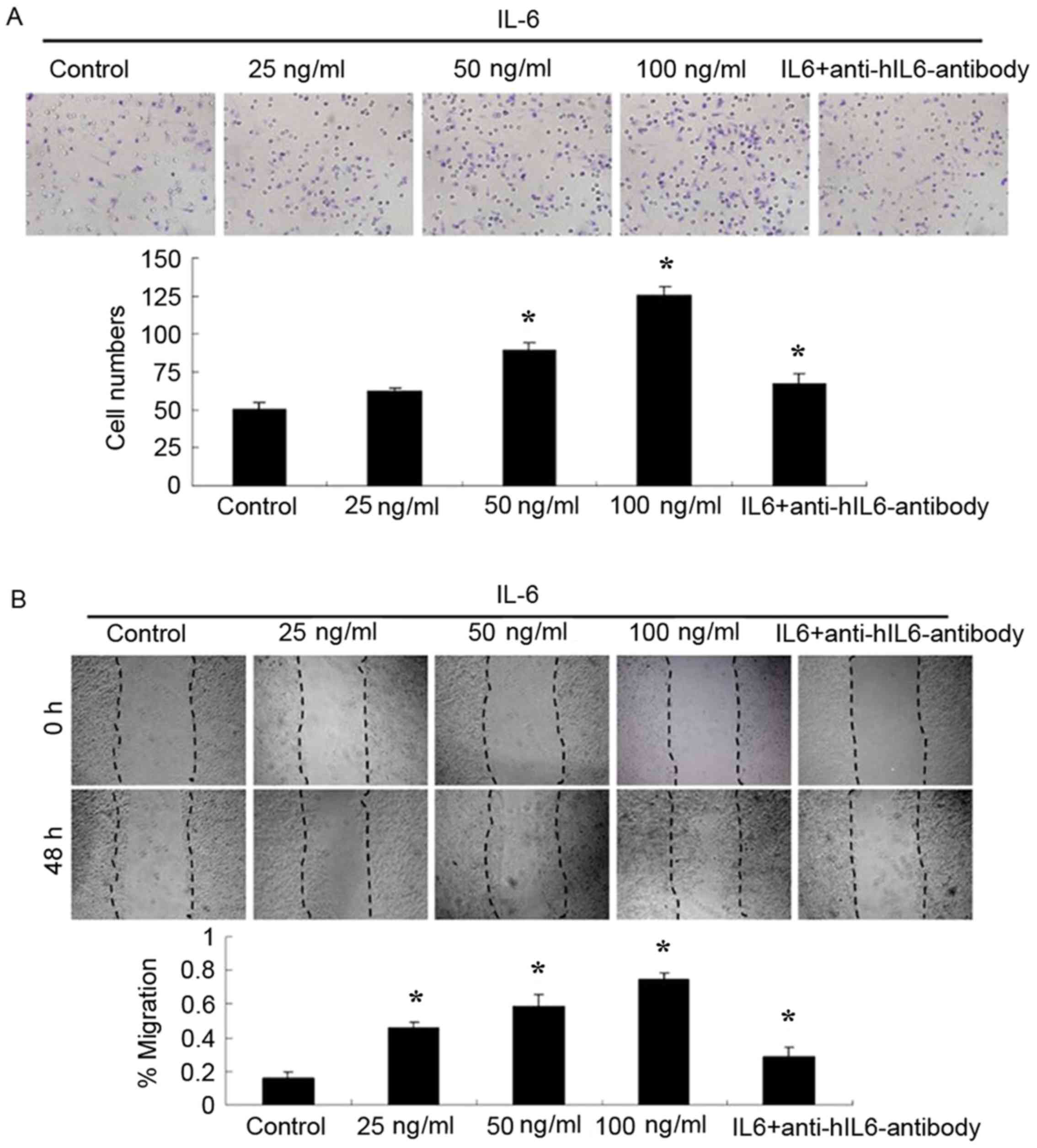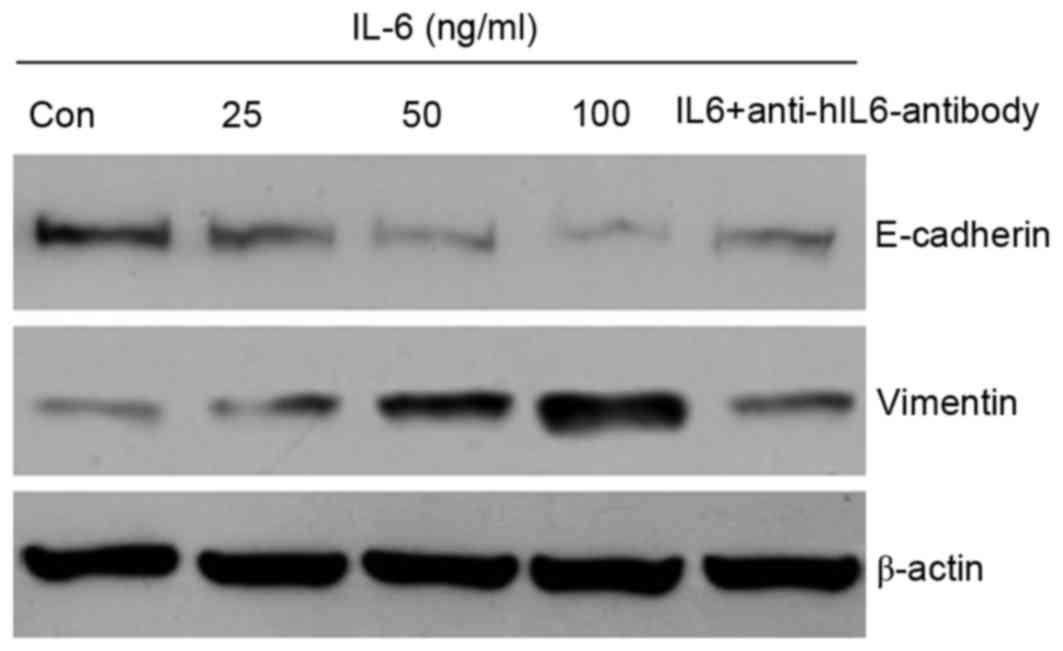Interleukin‑6 induces an epithelial‑mesenchymal transition phenotype in human adamantinomatous craniopharyngioma cells and promotes tumor cell migration
- Authors:
- Published online on: May 2, 2017 https://doi.org/10.3892/mmr.2017.6538
- Pages: 4123-4131
-
Copyright: © Zhou et al. This is an open access article distributed under the terms of Creative Commons Attribution License.
Metrics: Total
Views: 0 (Spandidos Publications: | PMC Statistics: )
Total PDF Downloads: 0 (Spandidos Publications: | PMC Statistics: )
Abstract
Total resection of adamantinomatous craniopharyngioma (ACP) is complex and often leads to postoperative recurrence. This is due to the tendency of the tumor to invade the surrounding brain tissue and the generation of a local inflammatory state between the tumor cells and parenchyma. While there is evidence to suggest that interleukin‑6 (IL‑6) induces craniopharyngioma (CP)‑associated inflammation, particularly in ACP, the role of IL‑6 in the progression of ACP remains unclear. The results of the present study demonstrated that CP inflammation was associated with pathological classification, extent of surgery, degree of calcification and postoperative hypothalamic status scale. Cytokine antibody arrays were conducted to measure the expression of IL‑6 and other inflammatory factors in tumor tissues in response to various levels of inflammatory exposure. IL‑6, IL‑6 receptor (IL‑6R) and glycoprotein 130 expression was detected by immunohistochemistry. In addition, an ELISA was performed to quantify the levels of soluble IL‑6R (sIL‑6R) in the cystic fluid and supernatants of ACP cells and tumor‑associated fibroblasts. These measurements demonstrated that ACP cells produce IL‑6 and its associated proteins. In addition, the results revealed that while the viability of ACP cells was not affected, the migration of ACP cells was promoted by IL‑6 treatment in a concentration‑dependent manner. Conversely, treatment with an IL‑6‑blocking monoclonal antibody significantly decreased the migration of ACP cells. In addition, IL‑6 treatment increased the expression of vimentin and decreased the expression of E‑cadherin in a dose‑dependent manner. The findings of the present study demonstrate that IL‑6 may promote migration in vitro via the classic‑ and trans‑signaling pathways by inducing epithelial‑mesenchymal transition in ACP cell cultures.




